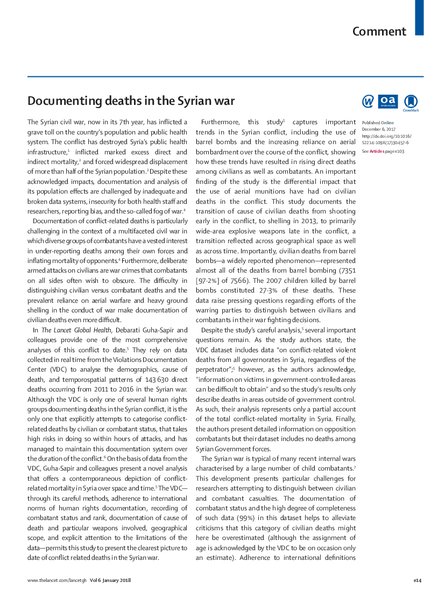
The Syrian civil war, now in its 7th year, has inflicted a grave toll on the country's population and public health system. The conflict has destroyed Syria's public health infrastructure,1inflicted marked excess direct and indirect mortality, and forced widespread displacement of more than half of the Syrian population. Despite these acknowledged impacts, documentation and analysis of its population effects are challenged by inadequate and broken data systems, insecurity for both health staff and researchers, reporting bias, and the so-called fog of war.
Documentation of conflict-related deaths is particularly challenging in the context of a multifaceted civil war in which diverse groups of combatants have a vested interest in under-reporting deaths among their own forces and inflating mortality of opponents. Furthermore, deliberate armed attacks on civilians are war crimes that combatants on all sides often wish to obscure. The difficulty in distinguishing civilian versus combatant deaths and the prevalent reliance on aerial warfare and heavy ground shelling in the conduct of war make documentation of civilian deaths even more difficult.